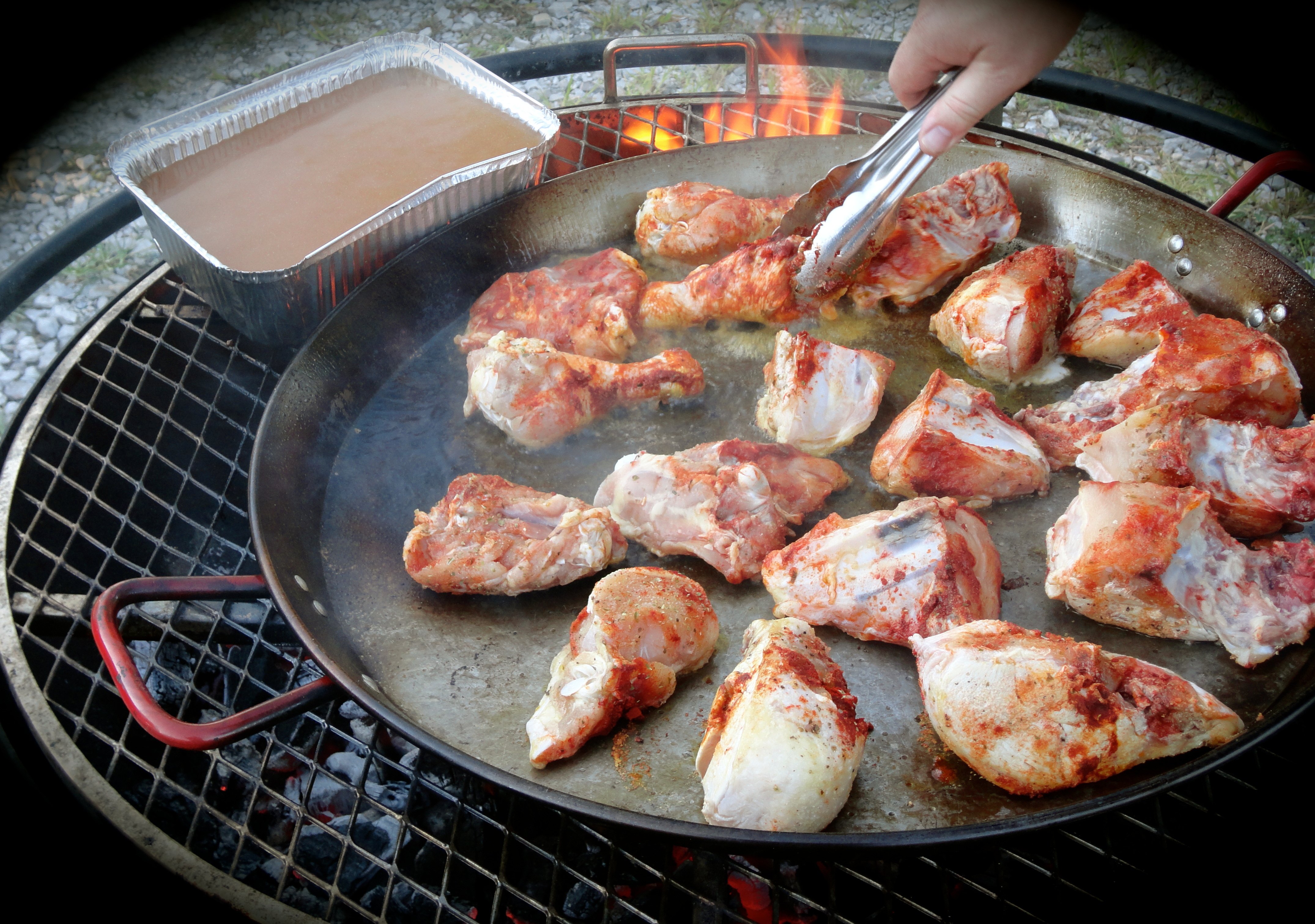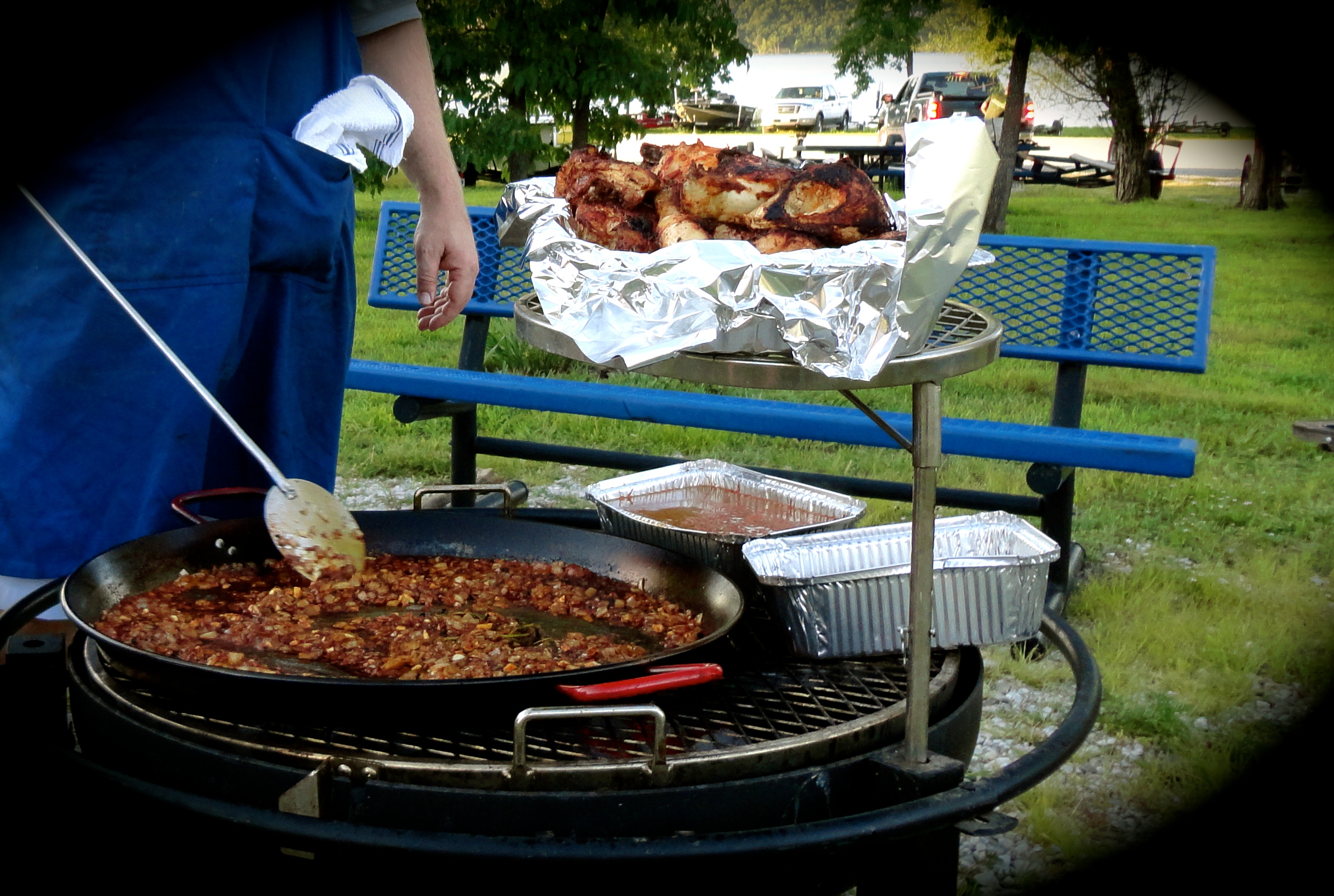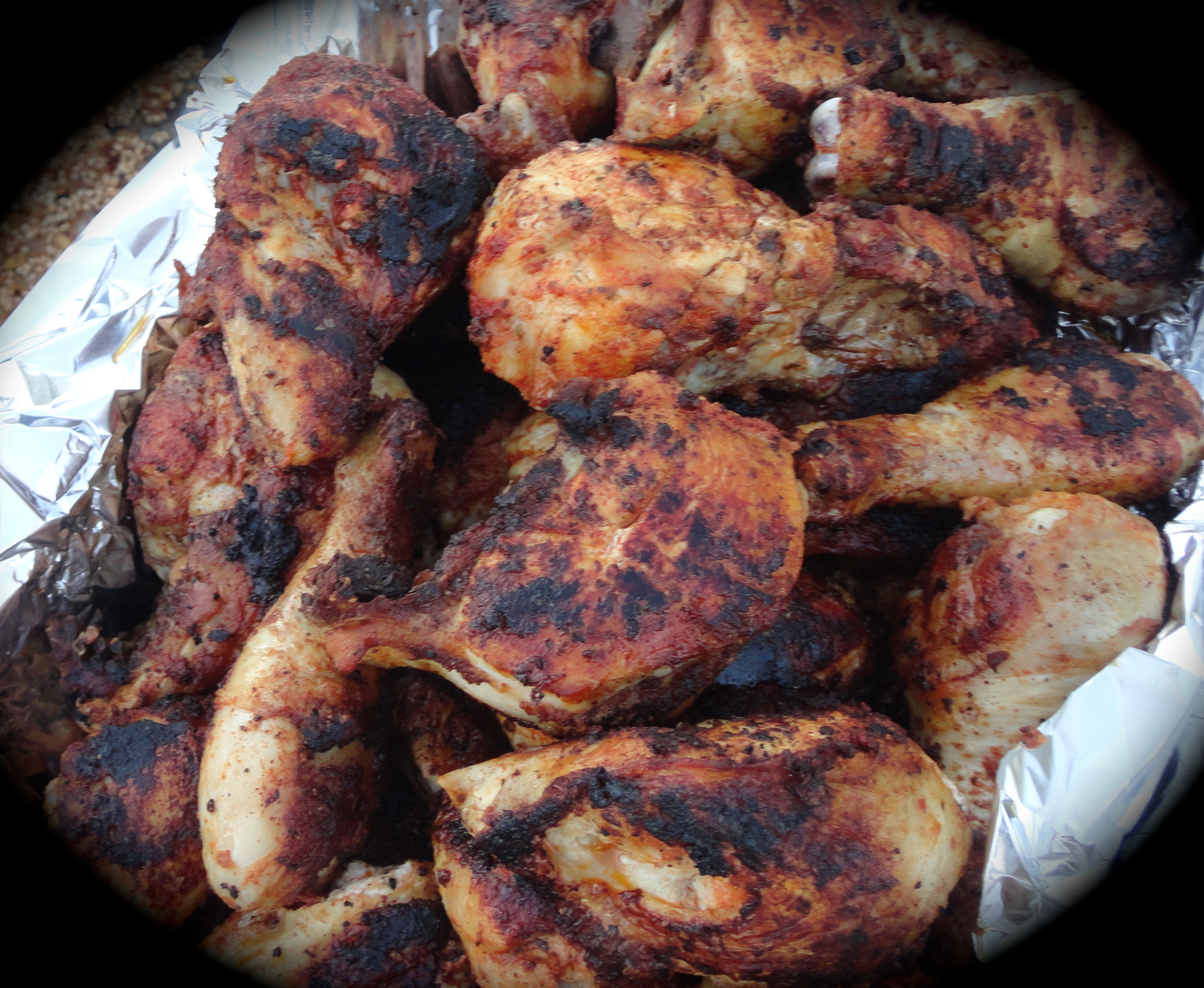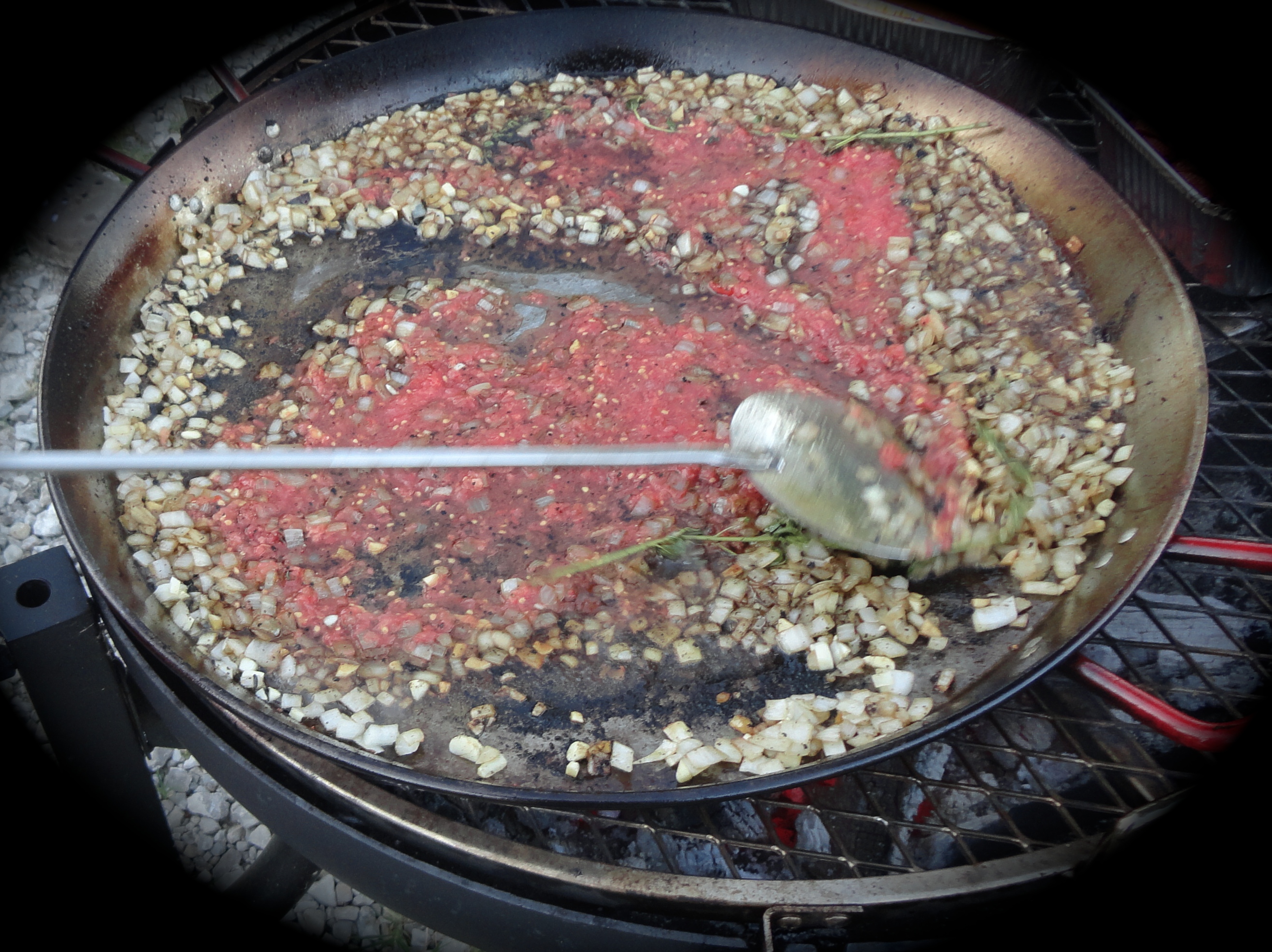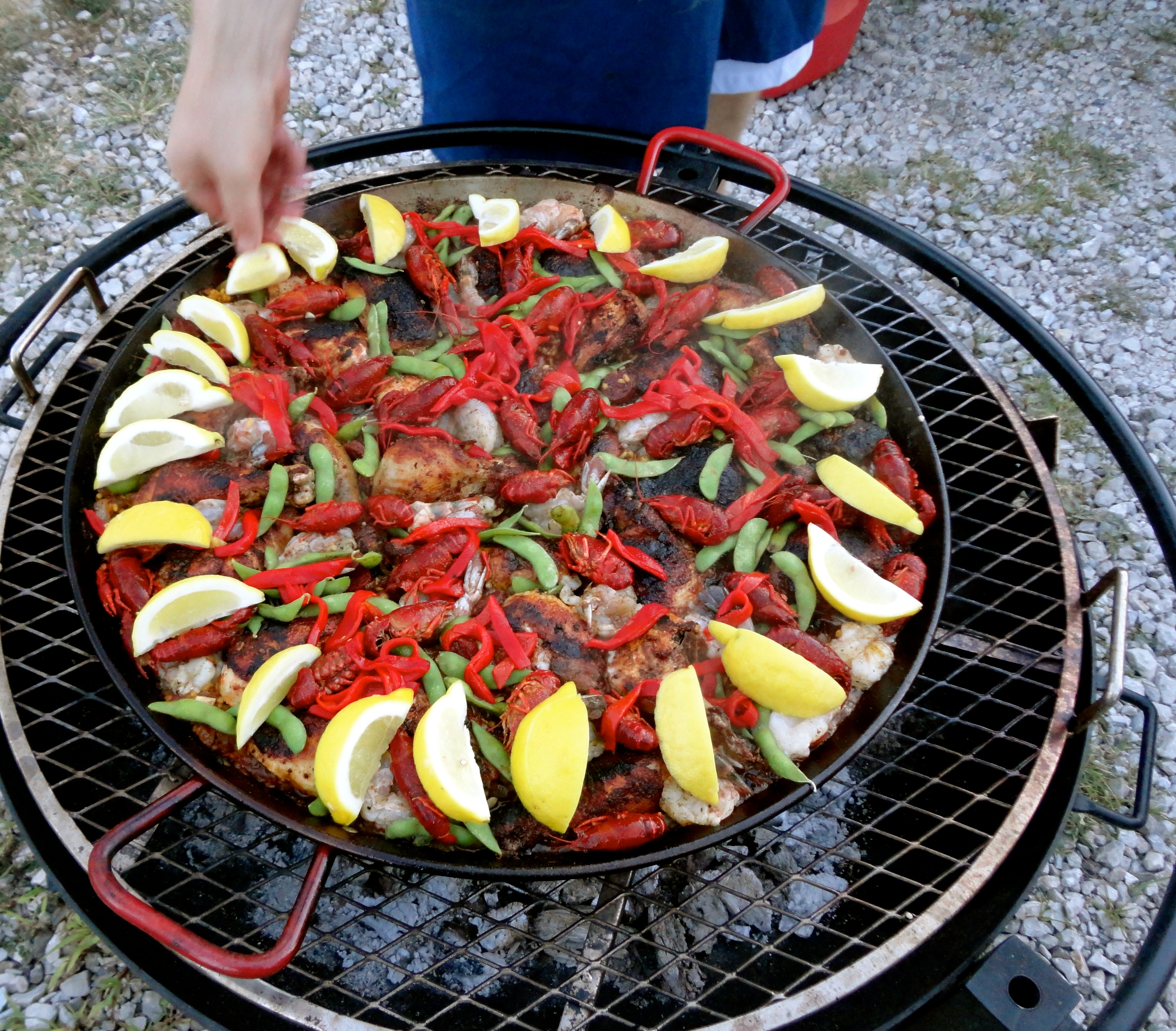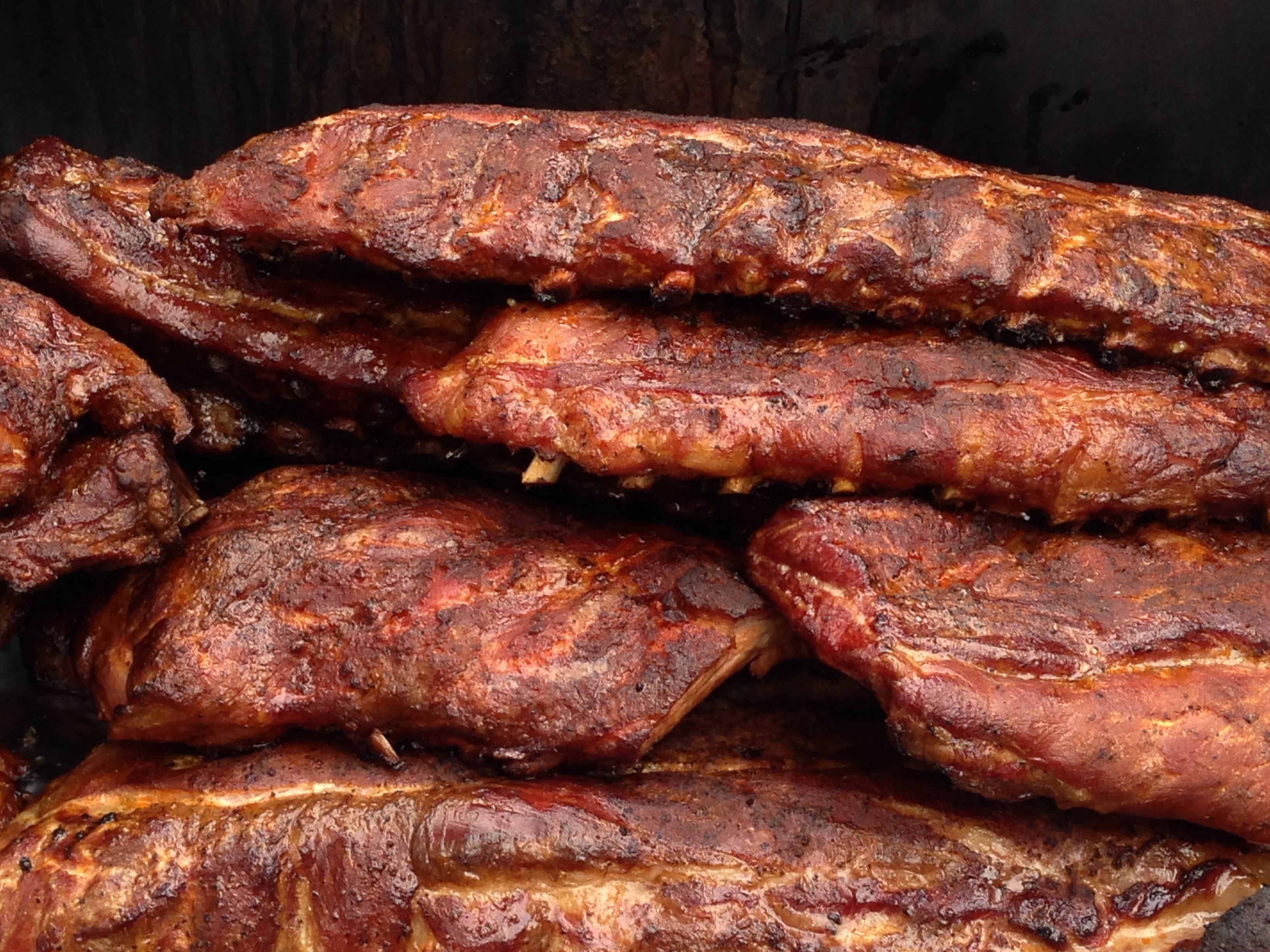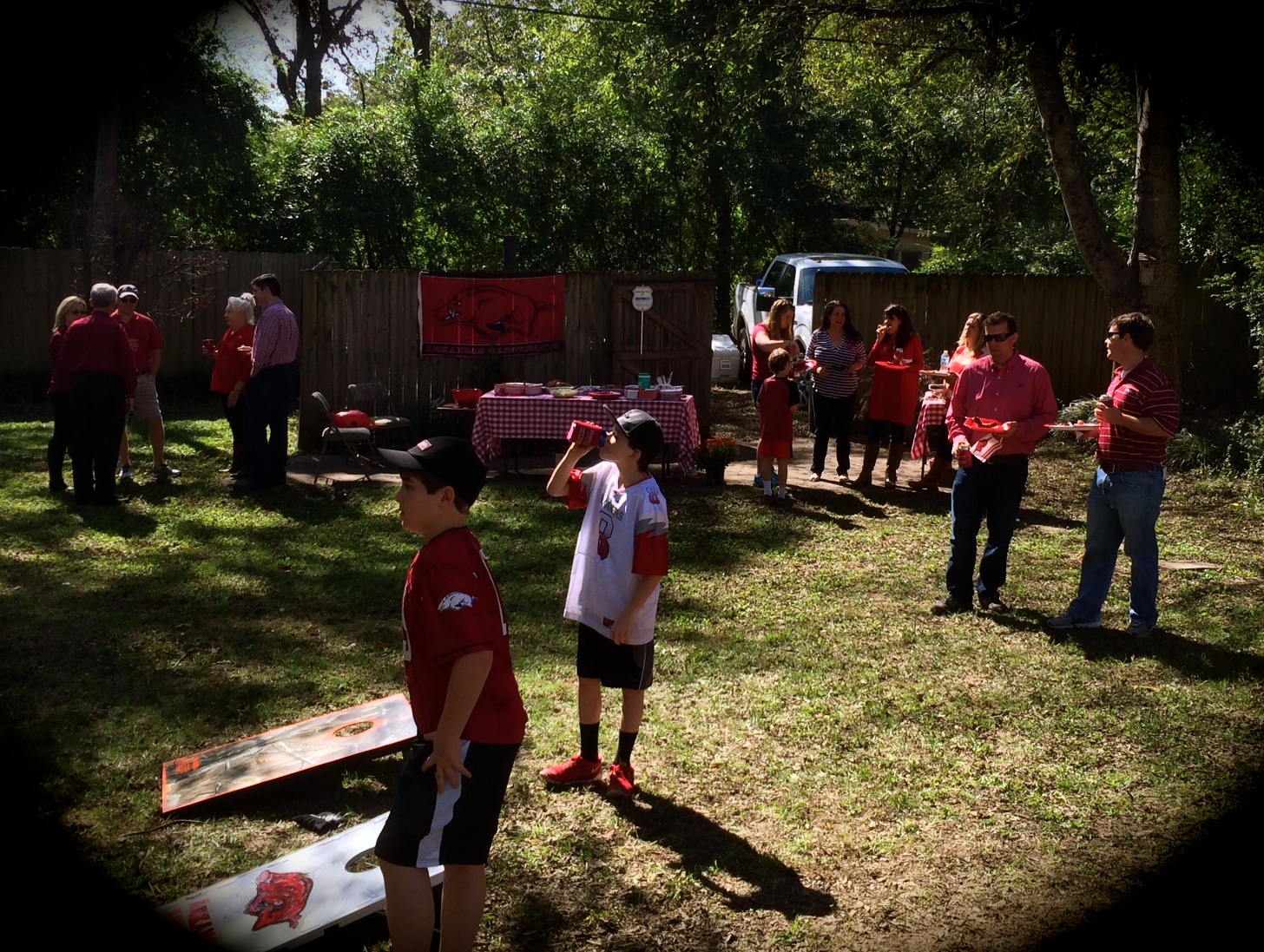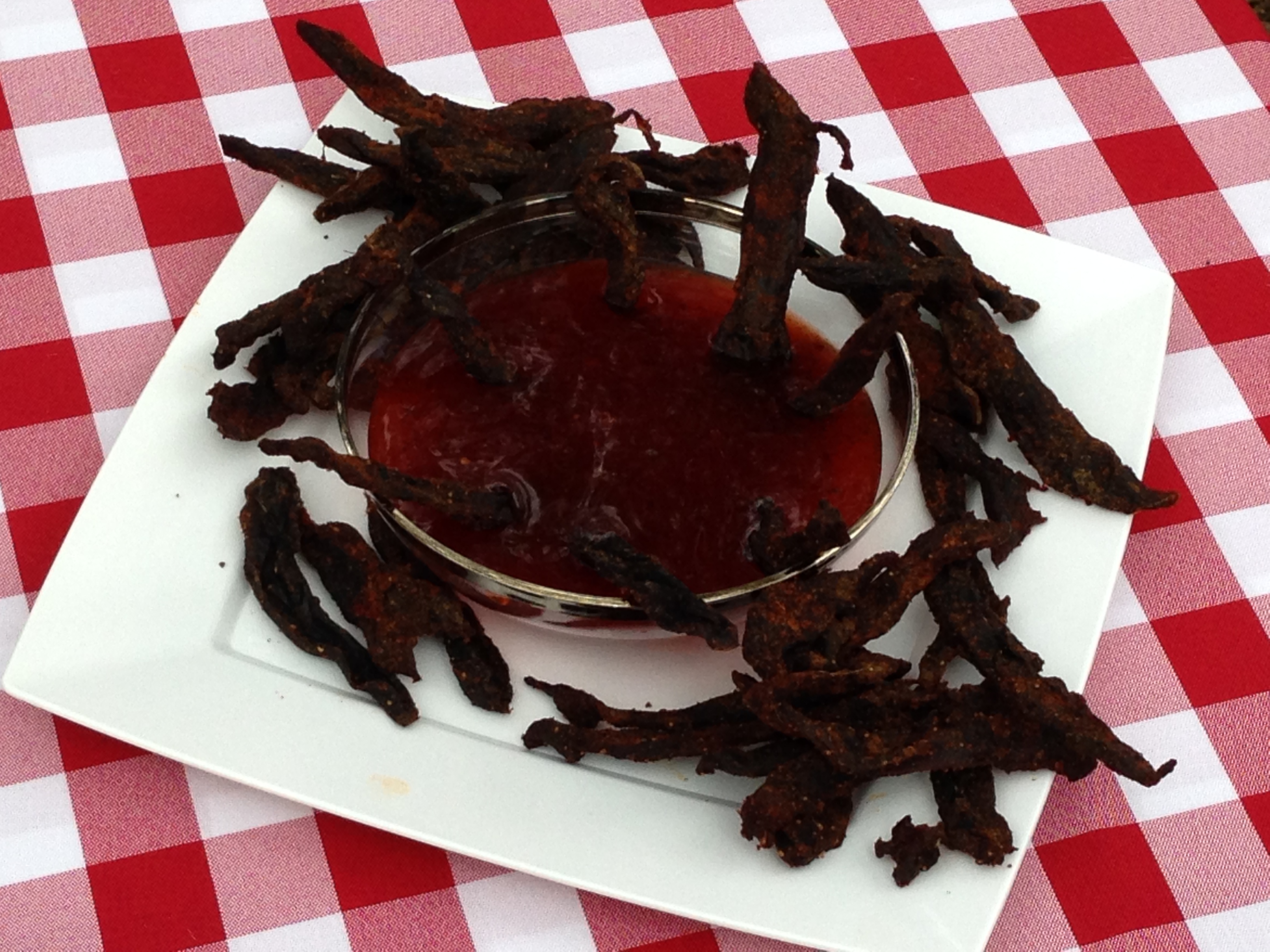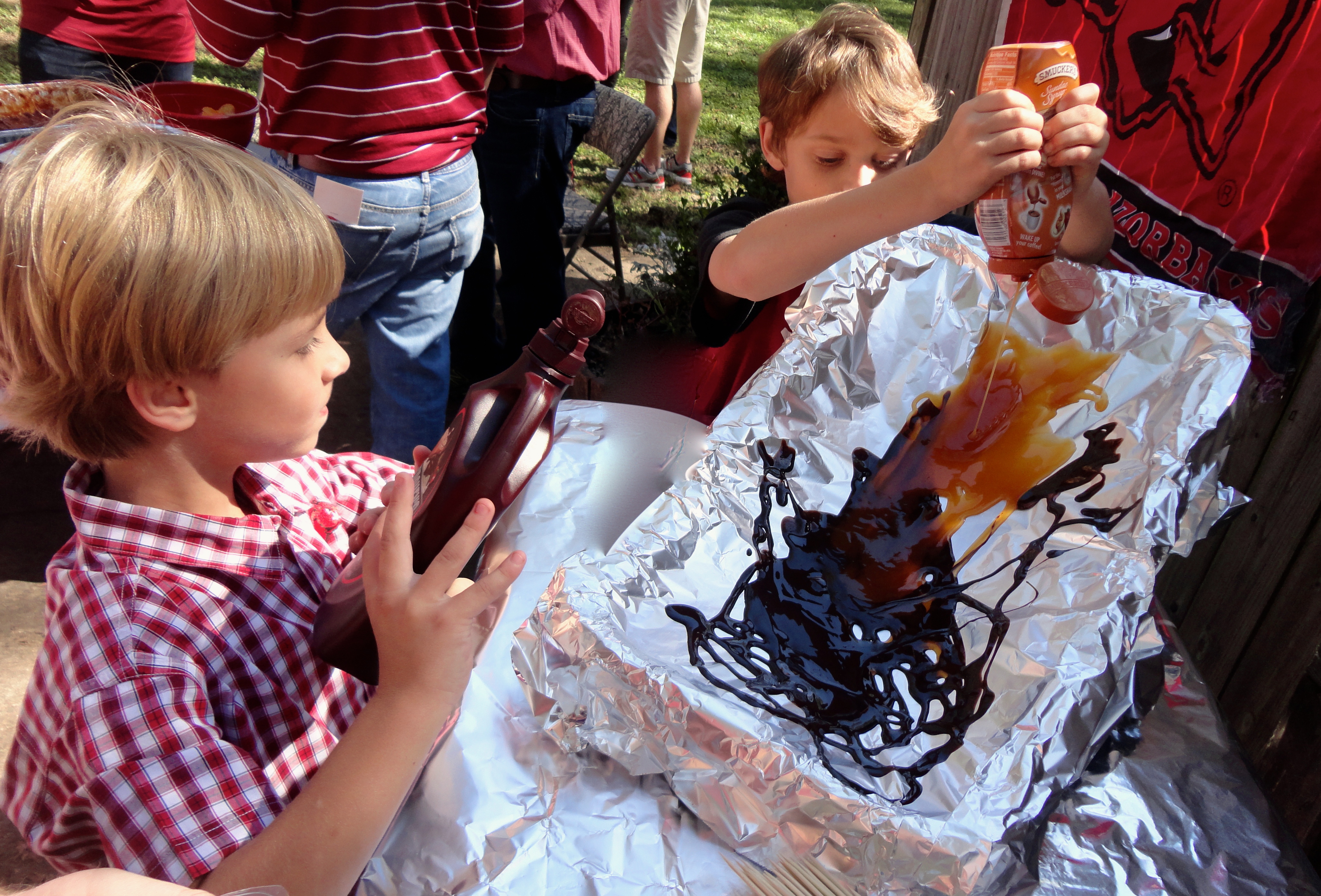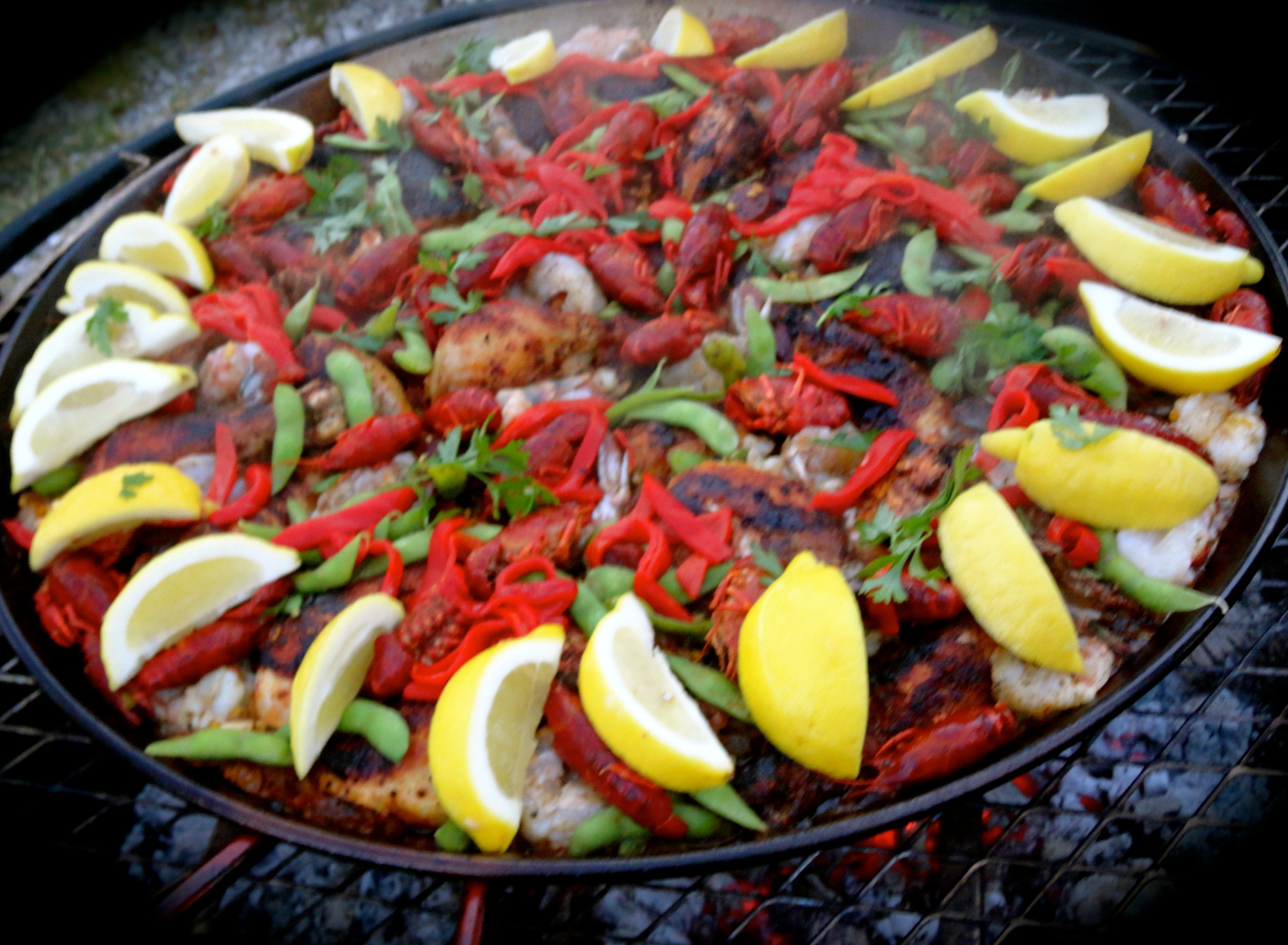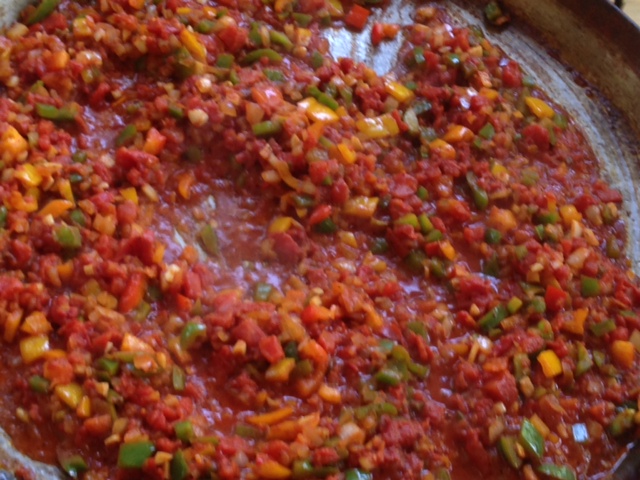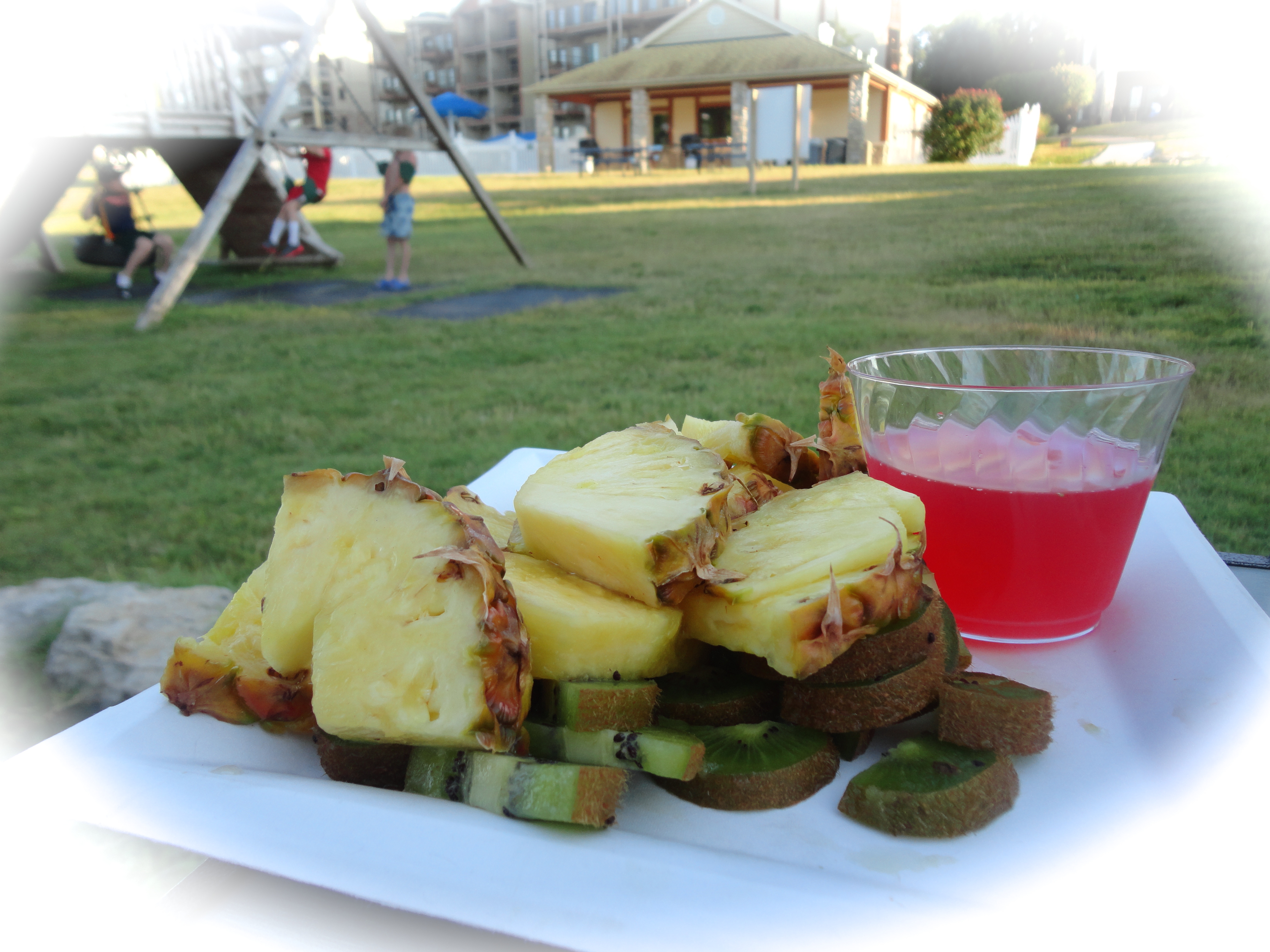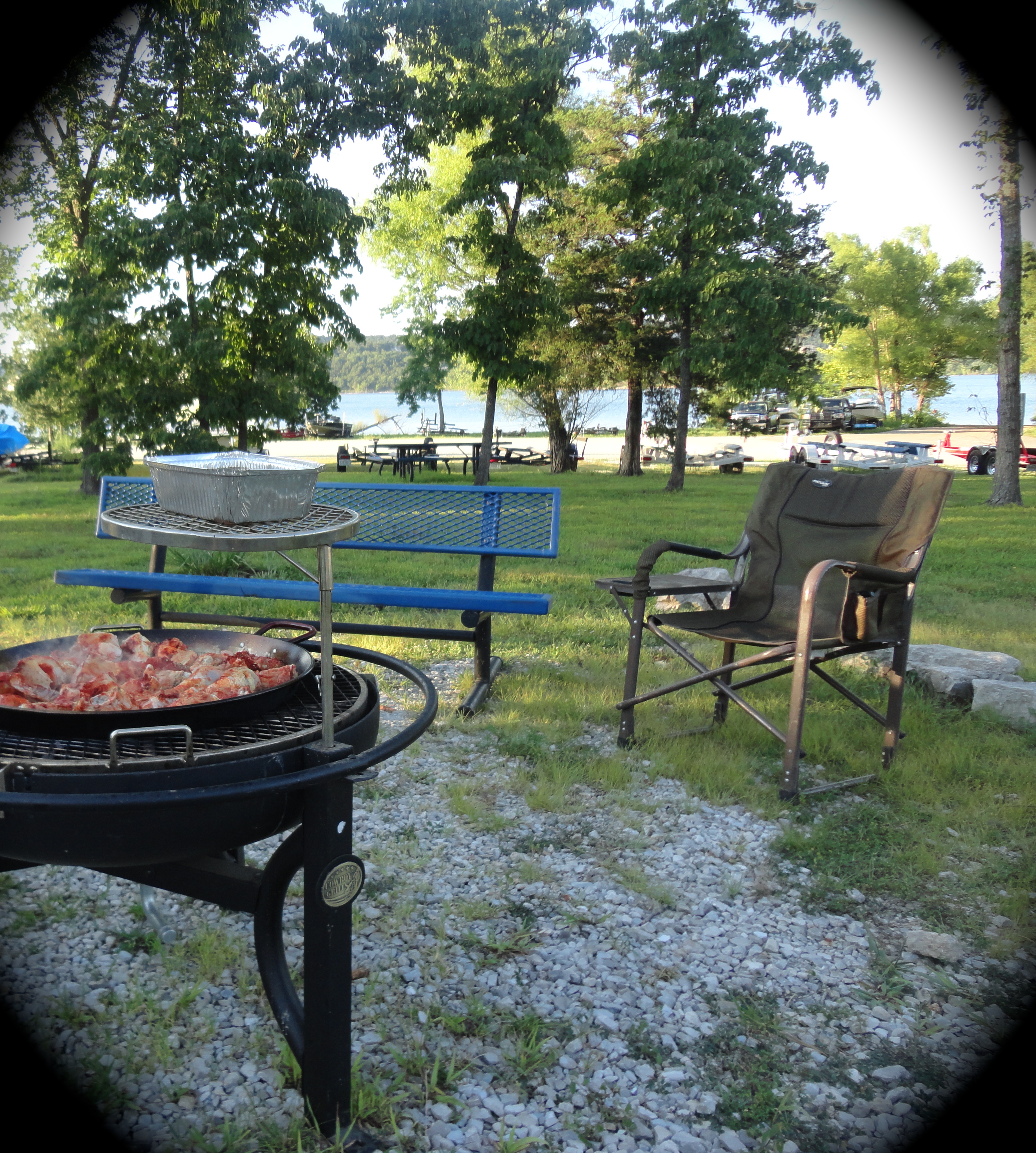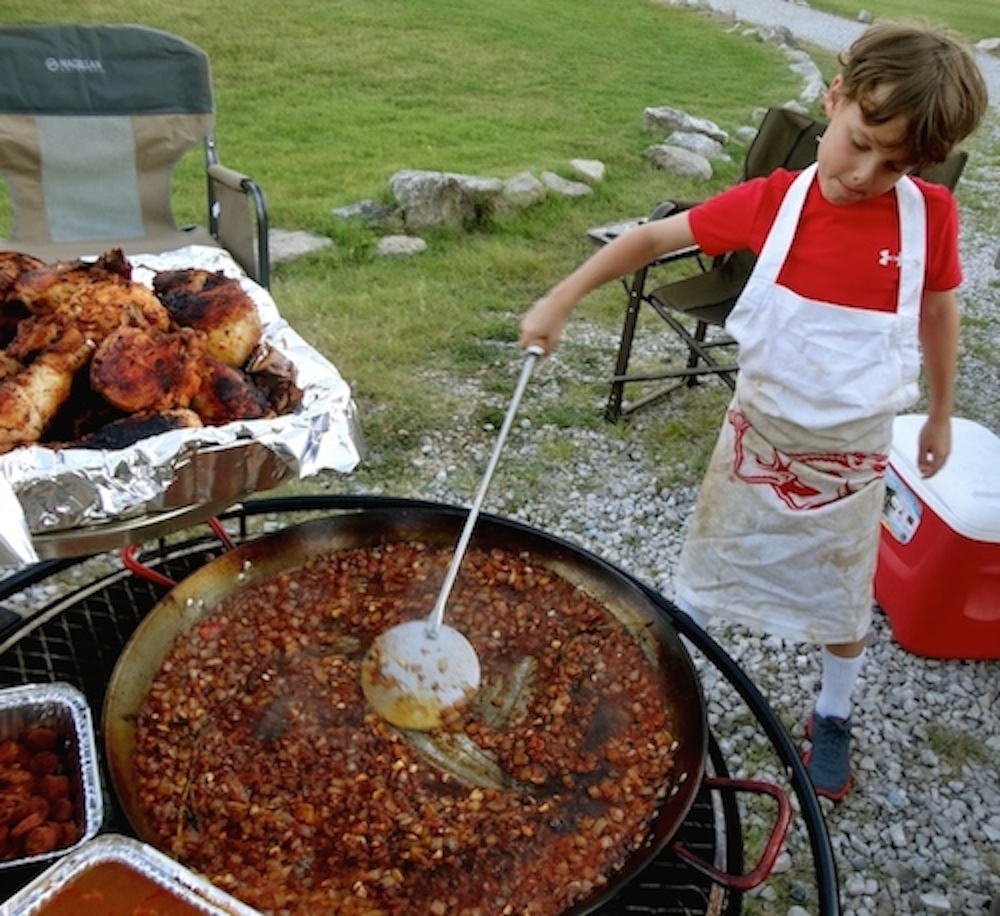In two recent posts, we have discussed the moment of our feast on Lake Table Rock and explored the seductive nature of paella as a feasting food. Now, for the dance…
equipment…
Since the dish is named after the pan, let’s start there. Our pan is a twenty-eight inch diameter carbon steel paella pan. Because the pan is large, a long wood-handled spatula is helpful also —not essential, but the feasters notice, just saying…
Traditionally, paella is made over a wood fire with a tripod to hold the pan —(adds a smoky flavor, aroma and helps create a festive atmosphere). But there are gas and electric burners made for paella pans also. The key is that the burner must be as big —or nearly so—as the pan. Otherwise, the pan heats unevenly making it difficult to balance the cooking of everything in the pan. We opted for a wood fire, but instead of using a tripod, we borrowed my Dad’s cowboy grill —the grilling surface is just a bit larger than our pan. The cowboy grill has the added advantage of an adjustable rack to help control the heat.
featured ingredients…
Embracing the original spirit of paella (not to mention, family harmony) rather than the traditional ingredients (snail and rabbit), we selected fresh garden tomatoes (grown by my father-in-law); chicken (all pieces, even though I know the white meat isn’t really suited for paella); large prawns; chorizo sausage; and crawfish (a nod to the Louisiana heritage of a few feasters) for our paella.
We opted for the Valencia variety of rice, and for liquid we used a combination of saffron-infused chicken and seafood broths.
the dance…
Dancing with a paella is like a spirited tango —it begins deliberately, moves feverishly, and finishes beautifully. The Feast-Maker leads by preparation: every ingredient must be washed, chopped and prepared before the fire is lit.
An afternoon of deliberate, but not hurriedly, preparations:
onion and garlic diced;
fresh tomatoes grated;
lemons sliced;
chicken seasoned and marinated in Spanish olive oil and a smoked sweet paprika;
chorizo sliced thin;
prawns washed, peeled, deveined, seasoned (salt, pepper, garlic) and marinated in Spanish olive oil and lemon;
crawfish cooked in a seasoned broth with added prawn shells; and
chicken fat and boney pieces simmered into a broth.
We used lump charcoal to start the fire and then added water-soaked hickory chunks as the charcoal began to ash. As soon as the flames gave way to glowing embers, we placed the paella pan on the grill and pan-fried the marinated chicken –allowing it to reach a dark brown color and then removing the pieces to a foil pan until later.
Next, we sautéed sliced chorizo in Spanish olive oil until it was brown and slightly crusty (starting with the marinated chicken and chorizo allowed the spices to cook out into the oil and flavor everything else). We removed the chorizo and set it aside.
We added onion, garlic, and grated tomatoes to our pan to make the sofrito. As the onion softened and tomatoes thickened, we added fresh thyme and cilantro —my youngest child, Charlie, was my designated sous feast-maker and he manned the long-handled wooden spatula during many of these steps.
Meanwhile, I stirred several threads of saffron into the chicken and seafood broth warming on the side of the grill allowing them to dissolve into the broths.
With the sofrito gently sautéed until it was a bit pasty, we added about five cups of Valencia rice —spreading it gently with the spatula so that it covered the pan. Then, we returned the chorizo and chicken back to the pan. We added about fifteen cups of saffron infused broth and stirred the pan gently to mix the rice with the broth.
Important: after this initial stirring of the rice —no more! The initial stirring ensures incorporation of the ingredients but then the rice needs calm to absorb.
We allowed it to simmer (undisturbed) for just over an hour —until the liquid was fully absorbed. Surprisingly, many find leaving it alone during this time to be the most difficult step, but not the Boar see the post titled “let it sit a spell…”
While the rice was sizzling and caramelizing to form the socarrat, we placed the raw prawns around the pan to cook (just needs a few minutes to turn pink). Then we arranged the cooked crawfish. Next, we scattered Edamame beans (typically, green peas are used but not a big seller with my kids). We placed sliced red peppers (we used a jar of Piquillo Spanish peppers but you could use fresh red bell peppers too) around the pan and garnished the edge of the pan with lemon wedges.
Once I judged the socarrat was achieved (as entertainment for the onlooking feasters, I mimicked the great Western-movie trackers listening to the rails for a coming train by dramatically putting my ear near the pan to listen for the sizzle of the caramelizing rice), I removed the pan to a rack above the grill and covered it with a damp towel. As the paella rested (around fifteen minutes) the feasters readied for the feast —mostly, by pouring more sangria, a topic for an upcoming post.
The dance ended with a flourish, as I brandished the towel (much like a matador displays his muleta in the final stage of a bullfight –at least, that was the vision in my head), unveiling the completed paella and tempting the feasters to charge.
The feast was on, my friend.
